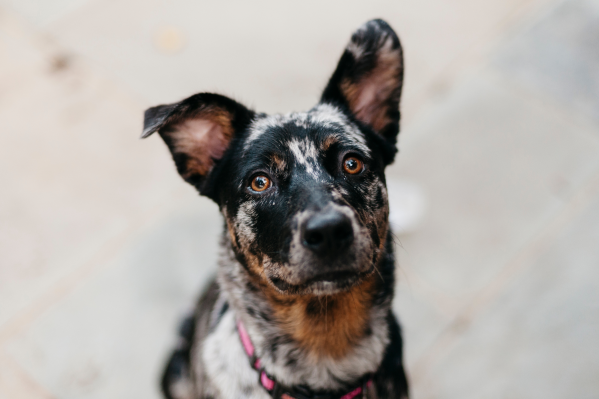Although our furry friends can't control how much they impact the environment, we can. Welcoming a pet into your home often increases your carbon foot print—or paw print, perhaps—but it doesn't have to be that way.
Making simple swaps for more sustainable pet products, being conscious about waste disposal, and getting your pet spayed or neutered can go a long way.
The truth is, humans, animals, and the environment are deeply connected, and our decisions can make a difference. If you're looking to become a more sustainable pet parent, start with the items on this list.
6 ways to be a more sustainable pet parent
1. Recycle & reuse
When it comes to things for your pet, try to repurpose as much as you can—and if you can't, recycle it (only if it's actually recyclable, of course).
There are so many things we can DIY for our pets—from treats and toys to beds and bandanas. Whether you make your pup some delicious treats with ingredients you already have (just make sure you double check that they're pet safe) or make your cat his new favorite toy out of an old cardboard box, choosing to create things for your pet with items you already have can go a long way.
The truth is, your pet won't know the difference!
2. Buy only what you need
While many of us helicopter pet parents love to purchase stuff that may be a little extra for our furry friends, most of it isn't necessary.
If you need to purchase new items for your pet, try to make eco-conscious choices. Opt for biodegradable paper instead of plastic doggy bags. Purchase quality, organic toys over cheap plastic ones. Bathe your pet with all natural ingredients instead of soap that contains harmful chemicals.
At the end of the day, what makes our pets happy typically isn't things. If you really want to spoil your fuzzy companion, opt for more walks, quality time, and snuggles.
3. Be conscious about pet waste
Yes, there is a sustainable way to handle your dog's poop or manage your cat's litter.
Did you know that dog poop contains nitrogen and phosphorus? These chemicals can not only deplete oxygen that water-based animals need to survive, but are also a breeding ground for disease-causing bacteria. Being diligent about cleaning up your dog's waste when you're outside helps protect natural habitats. This is another opportunity to skip on the plastic and use biodegradable options instead.
When it comes to cat litter, many pet parents opt for clay-based litter, which is not biodegradable. There are plenty of eco friendlier alternatives on the market, including those that are corn or wood based. To avoid disposing of the litter in plastic bags, you can opt for a flushable option like Really Great Cat Litter.
4. Neuter or spay your pet
The sad reality is that there is a major pet overpopulation problem, and getting your pet spayed or neutered is one of the best ways you can contribute to the environment. A plus? It's also better for their health!
In addition to neutering and spaying, it's also recommended to keep your pets inside. Did you know that outdoor cats have contributed to the extinction of 63 species of birds, mammals, and reptiles? Biodiversity is a pillar of a healthy ecosystem, so it's best to keep your pets inside to preserve the beautiful variety of living things on our planet.
5. Adopt
As a result of pet overpopulation, millions of pets are living in shelters and need homes. At the same time, puppy mills and breeders continue to breed dogs in mass numbers each year. Unfortunately, many of these puppies end up in shelters due to poor health and behavior as a result of poor breeding practices.
Choosing to adopt instead will give a pet in need a loving home and discourage the inhumane practices that occur within puppy mills and poor breeding programs. On top of that, mixed breeds tend to make the best pets!
6. Consider your cleaning supplies
Whether it's for pest prevention or stain removal, there are "greener" ways to clean. Many mainstream cleaning agents contain chemicals that are harmful to pets, people, and the environment.
Whether you DIY your own solution at home or opt for cleaner products, replacing your cleaning supplies can positively impact your environment.
While making these adjustments won't change things over night, making more conscious choices about what you purchase and how you pet parent means an environment that is better off for ourselves, our pets, and community. If you have questions about pet-safe products, the team at Pawp is more than happy to help.
